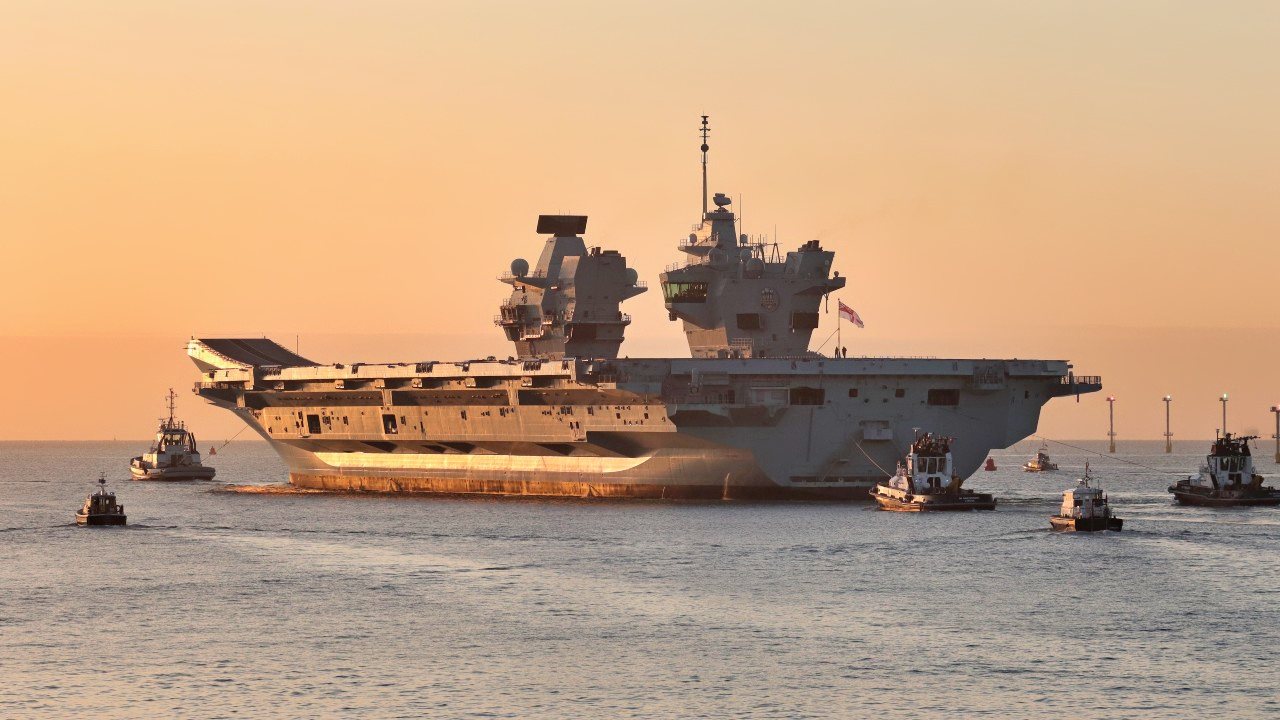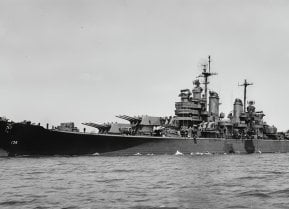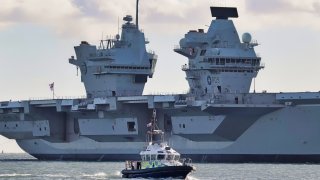The Royal Navy's Aircraft Carriers Look Worse Than Useless
The Royal Navy announced on Sunday that the departure of the HMS Prince of Wales from Portsmouth Naval Base had been delayed. The Royal Navy's newest and most expensive aircraft carrier was meant to replace its sister ship, the fleet flagship HMS Queen Elizabeth. That carrier had been scheduled to depart from Portsmouth a week earlier to lead Exercise Steadfast Defender, the largest NATO exercise since the Cold War.
The Royal Navy announced on Sunday that the departure of the HMS Prince of Wales from Portsmouth Naval Base had been delayed. The Royal Navy's newest and most expensive aircraft carrier was meant to replace its sister ship, the fleet flagship HMS Queen Elizabeth. That carrier had been scheduled to depart from Portsmouth a week earlier to lead Exercise Steadfast Defender, the largest NATO exercise since the Cold War.
The British media reported £3bn warship had remained in port, and Portsmouth Harbour's mouth was reopened to normal marine traffic. Hundreds of locals had lined along the harbor to watch the carrier's scheduled department at just after noon local time.
The UK's Ministry of Defence (MoD) only stated that the departure of the warship had been delayed and no further details. It was a year and a half ago that HMS Prince of Wales was sidelined for several months after she broke down off the Isle of Wight after beginning a planned deployment to the United States. The Royal Navy has stated that the issues are not related.
The delay further tarnished the reputation of the Royal Navy as a capable fighting force, and The Sunday Times even called it a "Further Embarrassment" for the senior service of the British military. It certainly puts into question whether the United States and the rest of NATO can count on the Royal Navy in wartime if neither of its two carriers can actually be deployed on time!
The vessel is one of the most powerful surface warships ever constructed in the UK, with a flight deck that is 70 meters wide (230 feet), and 280 meters (918 feet) long. The warship isn't equipped with catapults and arrestor wires and instead was designed to operate with Short Take-Off and Vertical Landing (STOVL) jets from a ski-jump ramp. The flattop can embark up to thirty-six Lockheed Martin F-35B Lightning II fifth-generation stealth fighters and four Merlin helicopters. In surge conditions, the carrier is capable of supporting up to seventy F-35Bs, while she has accommodation for 250 Royal Marines and the ability to support them with attack and transport helicopters.
The carrier operates with a crew of 679 but can accommodate up to 1,600 personnel – including full airwing, Royal Marines, and even refugees if required.
In addition to its aircraft, which serve as its primary offensive and defensive systems, HMS Prince of Wales is armed with three Phalanx CIWS (close-in weapon system) turrets to deal with incoming threats from the sea and air. Comprising a radar-guided 20mm Vulcan cannon mounted on a swiveling base, the Phalanx has a dual fire rate of 3,000 or 4,500 shots per minute and is capable of hitting targets up to a mile away.
The carrier has a top speed of 25 knots and a range of 10,000 nautical miles.
Not All Smooth Waters
The 65,000-tonne HMS Prince of Wales has also had its share of problems even before officially entering service. The aircraft carrier required a lengthy maintenance period in 2020 to address a leak that was reported to cause serious flooding to some lower compartments, which resulted in damage to several systems that cost £3.3million to repair while an additional £2.2million was spent fixing the pipes on both of the Royal Navy's two brand new carriers.
The carrier was also sidelined for several months after she broke down off the Isle of Wight just one day after departing from Portsmouth in September 2022 to begin a planned four-month deployment to the United States. Divers were even called in to inspect the hull of the 930-foot-long flattop after damage was reported to the starboard propeller shaft.
The disabled flattop had to be towed to Rosyth, Scotland, for repairs, which reportedly cost the UK taxpayers upwards of £25 million ($30.5 million USD). One reason for the sky-high repair bill was that an inspection identified a problem with the Prince of Wales' port shaft, and Royal Navy officials have decided to overhaul that one as well. The carrier's return to service was further delayed due to the availability of parts – which highlighted troubles the Royal Navy could face in a major crisis.

There had been speculation last month that the Royal Navy might send one of its two carriers to the Middle East to aid or even replace the U.S. Navy's USS Dwight D. Eisenhower (CVN-69) when it returns to the United States later this year.
Yet, it seems that NATO can't count on the Royal Navy to get a carrier to the exercise it was supposed to lead – so how can it be counted on deploying a carrier to confront the Houthi rebels in Yemen?
Author Experience and Expertise: Peter Suciu
Peter Suciu is a Michigan-based writer. He has contributed to more than four dozen magazines, newspapers, and websites with over 3,200 published pieces over a twenty-year career in journalism. He regularly writes about military hardware, firearms history, cybersecurity, politics, and international affairs. Peter is also a Contributing Writer for Forbes and Clearance Jobs. You can follow him on Twitter: @PeterSuciu. You can email the author: [email protected].
Image Credit: Shutterstock.


